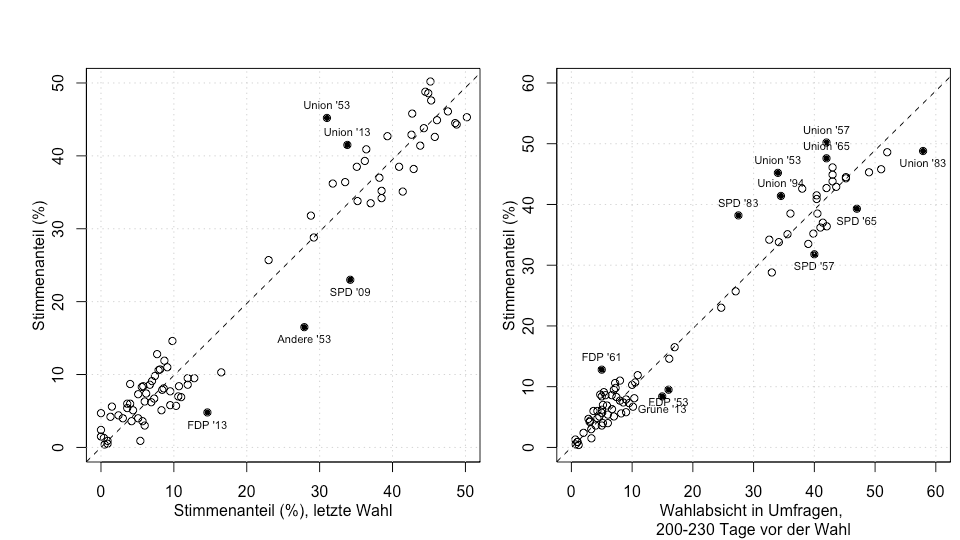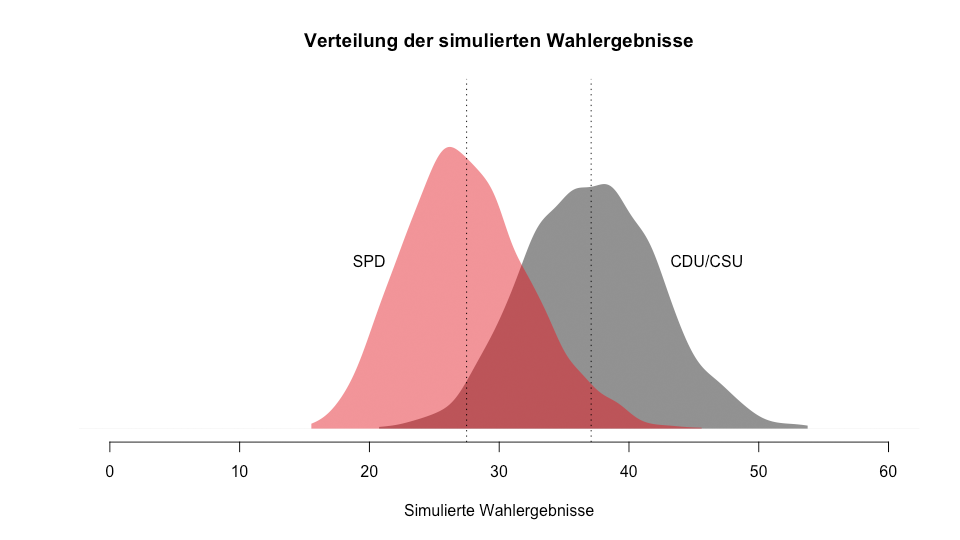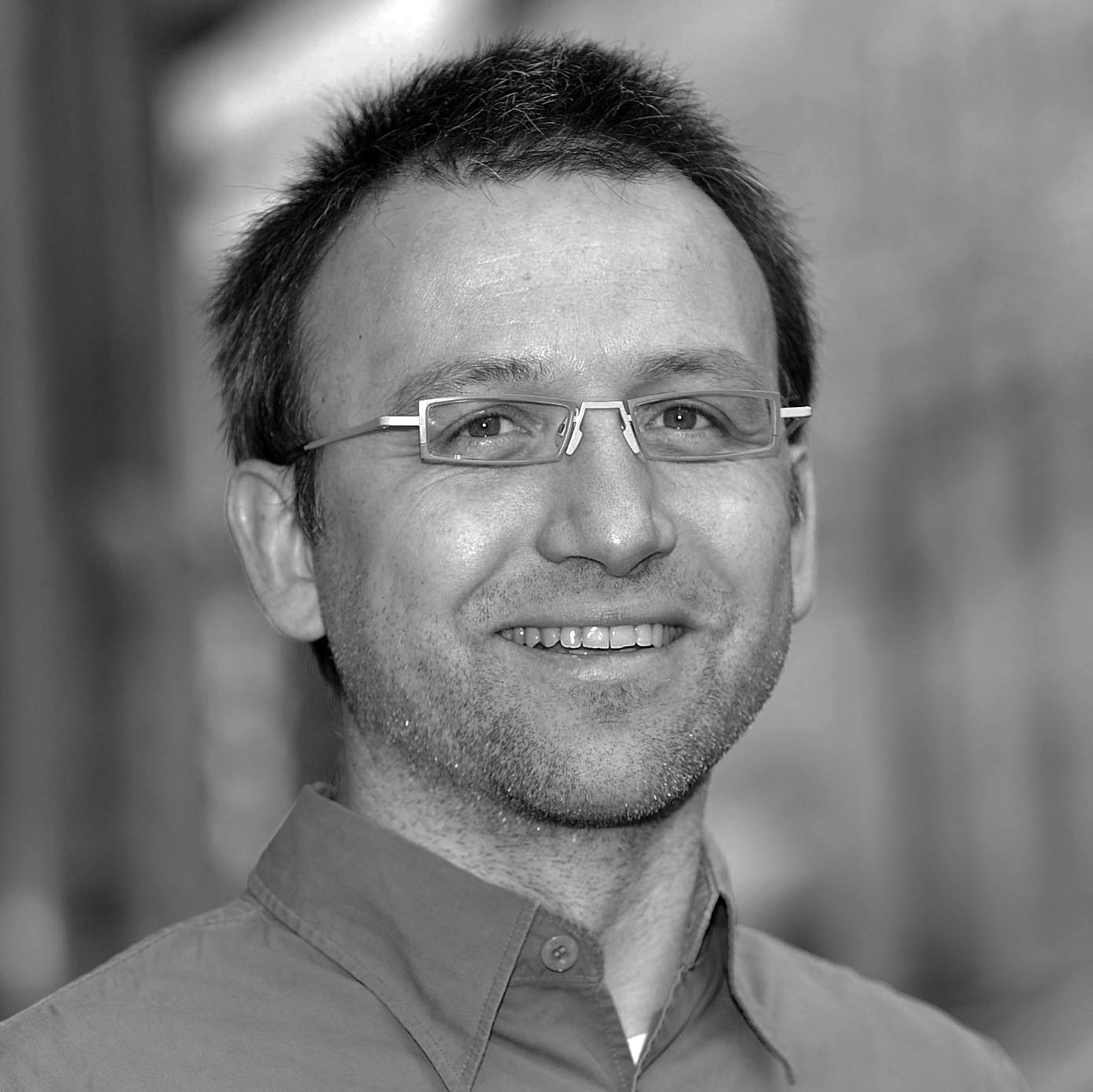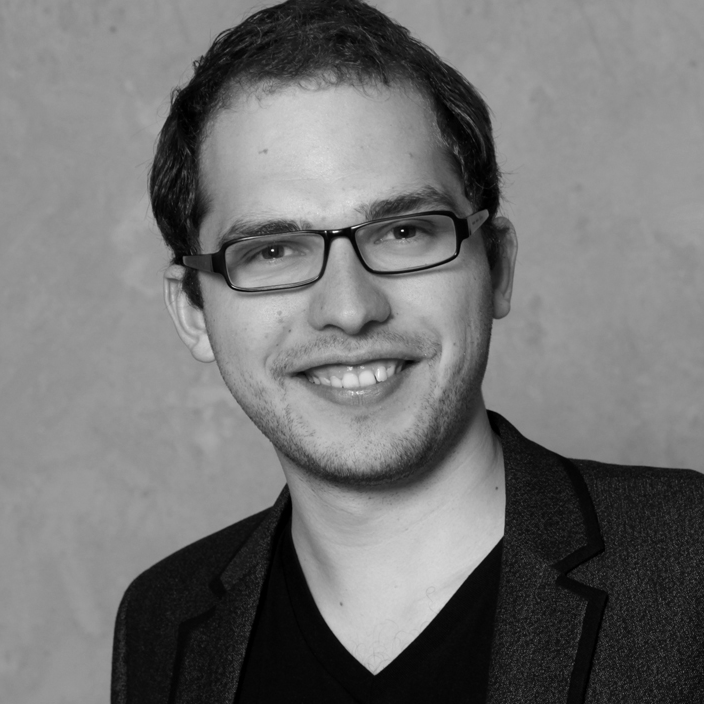Zweitstimme.org’s forecast model
The structural component
The structural component of our model is based on factors that have already proved to be relevant for projecting election results in the past (since 1949). These include, for example, the performance of parties in past elections, historical survey data, and information on whether a party provided the Chancellor. In other words, the structural component learns from the regularities of all past federal elections. The early availability of this information (already 200 days ahead of the election) allows an early prediction of the election outcome.

The polling component
However, the structural component alone is often not sufficient to reflect short-term adjustments in the party system or fluctuations in the political climate. We therefore use published values of the so-called Sunday question to take account of an election’s dynamics. In simple terms, to forecast the actual outcomes we combine the information on the regularities of past elections with what we are currently observing in the polls. While the structural component of the model remains stable, our forecast is continuously updated with each newly published poll.
From vote shares to probabilities
Our model uses a so-called MCMC algorithm, which—metaphorically speaking—repeatedly simulates the election outcome; in our case 100,000 times. Based on these simulations, probabilities can then be calculated for all events that are directly related to a party’s predicted vote shares. For example, if the CDU/CSU is ahead of the SPD in approximately 80,000 of the simulations, this corresponds to an estimated probability of 80% that the CDU/CSU will actually perform better than the SPD.



